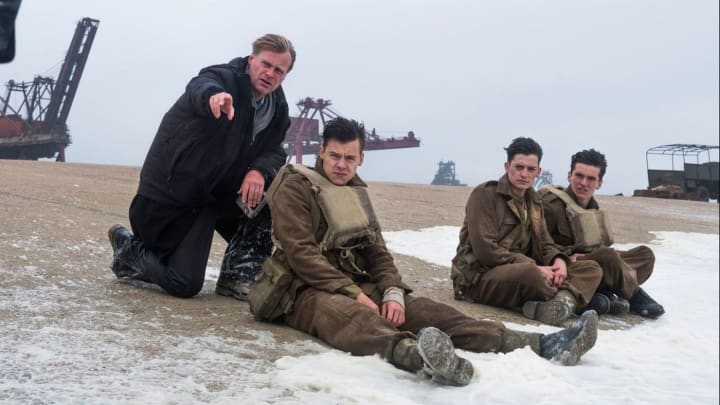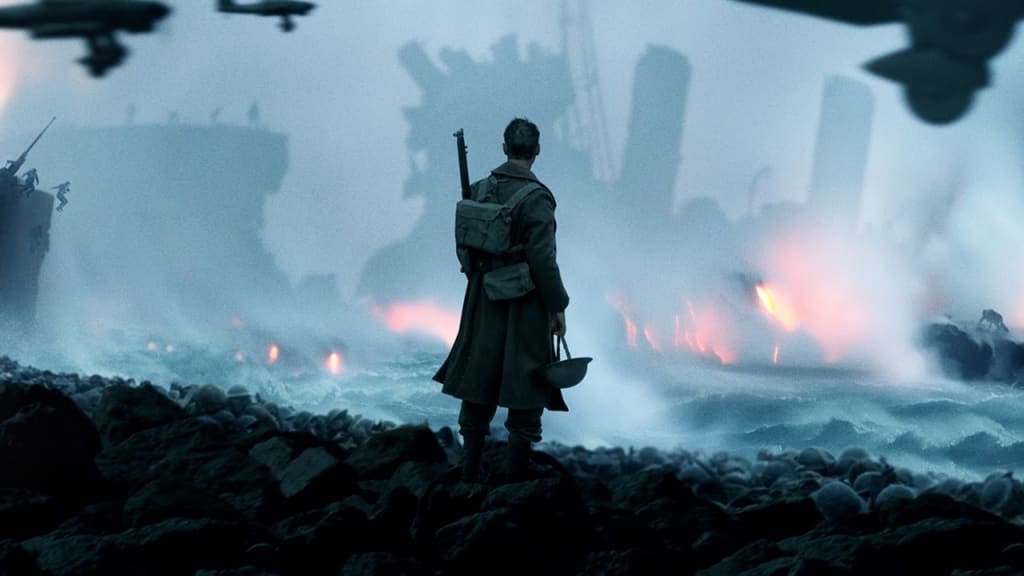Christopher Nolan’s Dunkirk draws the line between disaster and war.
Dunkirk isn’t your typical war movie, but it’s certainly Christopher Nolan at his best. It’s been a little over a year since the release of this epic wartime masterpiece and it’s time to dive into what made Dunkirk do so well at box offices around the world.
The film tells the story of an early movement called “Operation Dynamo.” This evacuation was put in place by the Allied forces in World War II after British, French, and Belgian troops were trapped by the German army. Surrounded by German troops in the area around Dunkirk, the Allies rallied together and pulled off one of the biggest evacuations in military history.
This operation began early in World War II, months after Germany invaded Poland and just weeks after Hitler’s forces began rolling into the Netherlands, Belgium, and France.
Watching this film in IMAX is sure to take your breath away. From the moment the opening scene begins you’re thrust into the action. We’re watching soldiers trying to escape with their lives while everything around them is falling apart. And while the lack of dialogue or personality from each character makes it difficult to care, Nolan personalizes the film in a way that it feels like you’re put in the same situations of the soldiers on-screen.

The majority of the film was shot in IMAX 65mm and 65mm large-format film stock. By using several historic boats from the evacuation as well as period aeroplanes, special effects were hardly touched. The IMAX camera is used in almost every scene which easily allowed Dunkirk to be the highest resolution film to ever be shot.
Dunkirk focuses on the impact of the environment and the film is very clear by concentrating on the views of land, sea and air as opposed to a specific character. The timeline becomes extremely organic to the film’s thorough emphasis on being in a very stressful environment where tragedy could happen at any moment. Intertwining the three perspectives of the Mole (one week), the sea (one day), and the air (one hour) while also having them finish at the same moment of climax in a flurry of activity is something only the brilliance of Christopher Nolan could accomplish.
Along with the timeline, Hans Zimmer’s genius orchestral builds at each peak of action and constant ticking that builds until the end of the film is what makes Dunkirk feel complete. There’s not a moment of silence until the ending scene, which exercises Zimmer’s skills to the max. Any chance you think there is to catch your breath, you’re sorely mistaken by the next onslaught of sound.
There’s an art in having the ability to bring every aspect of a film together. With Nolan’s creative writing style partnered alongside Zimmer’s brilliant talent of challenging sound, the two were a seamless fit that allowed the film to have a life of its own.
The casting is what also allowed Dunkirk to succeed globally. To have British acting legends Mark Rylance and Kenneth Branagh as well as up and coming stars Cillian Murphy and Tom Hardy represented in the film brought a variety of people to Dunkirk theatres. Even including musician and first-time actor Harry Styles helped this wartime movie reach a new audience.
Each played their roles exceptionally well. No one actor was the main focus of the film, but rather their stories melded together seamlessly, which gave an ease to the personalities represented in Dunkirk.
Throughout the film, we grasp the main theme is survival. That’s where Dunkirk draws the line between disaster and war. There’s no overwhelming violence that is typically associated with a war movie. But it doesn’t matter that there isn’t the usual blood and gore placed throughout. It just means that the film itself doesn’t overshadow its tragedy. Instead, it treats hope with subtlety and dignity.
Watch the accompanying video here:

